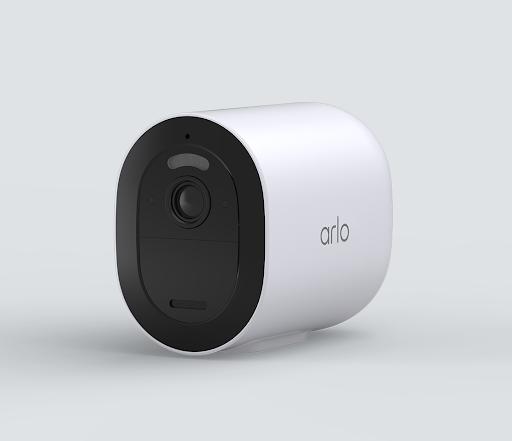Having a surveillance camera that can be managed from more-or-less anywhere in the world seems ideal, right?
As it turns out, security camera developers are increasingly incorporating mobile data functionality into their products so users can upload and view footage even without a Wi-Fi connection.
What are the best 4G home security cameras?
Best Cellular Security Cameras | Our Picks
- Best cellular security camera – Arlo Go 2
- Best wireless cellular security camera – Reolink Go PT
- Best off-grid cellular security camera – Vosker V200
- Best outdoor cellular security camera – Reolink Go
Arlo Go 2
Best cellular security camera
Available on Arlo. From $249.99.

Pros
- 3G and 4G data support
- SD card backup
- Spotlight is great for outdoor use
Cons
- 1080p resolution falls short of other Arlo cameras.
- Expensive
The successor to ‘the world’s first and only 100% wire-free, IP65 Certified weather-resistant, SIM card connected mobile HD security camera’, the Arlo Go 2 is a fantastic 4G-compatible security camera.
Crisp 1080p HD video, two-way audio, Amazon Alexa and Google Assistant support, and advanced motion detection features make for modern and robust security, while the option for local back-up storage via an SD card ensures a reliable way to backup footage in the event of a signal dropout.
What others are saying…
‘An improvement over the original, the Arlo Go 2 works over Wi-Fi or 4G, seamlessly swapping between the two. Its Full HD resolution is an upgrade over the original, although lower than most of the Arlo range. This model is expensive, but if you need security camera coverage where there’s no Wi-Fi, then this is the best option.’ – David Ludlow for Trusted Reviews.
The Reolink Go PT
Best wireless cellular security camera
Available on Reolink. From $229.49.
Pros
- Pan and tilt function
- Solar panel extends battery life significantly
- Supports 3G and 4G
Cons
- No Wi-Fi
- No 5G support
Reolink’s flagship 4G product is perfect for those on the move. Totally wire-free and suitable for the outdoors, the camera runs on 4G and 3G networks, meaning a WiFi connection isn’t needed.
Up to 1080p capture, a rechargeable battery, and the option for solar power all make the camera well-equipped for a vast range of security needs, but the standout feature is its 355 degree pan and 140 tilt ability. This means that virtually any blindspot, even in large areas, can be covered.
What others are saying…
‘The Reolink Go PT Plus is another excellent camera. The pan and tilt function is something that would be very useful for anyone that has this located in a remote location, giving them easy position adjustments and a way to do a sweep of the area manually.’ – James Smyth for Mighty Gadget.
Vosker V200
Best off-grid cellular security camera
Available on Vosker. From $349.99.
Pros
- Operates in as low as -40 degrees celsius
- AI recognizes difference between people and vehicles
- GPS trackable
Cons
- Hefty body
- Expensive
Though on first glance it might seem like some sort of strange military gadget, Vosker’s V200 is a powerful, LTE-functioning security camera. Ideal for construction sites, farms, and more, the camera captures full 1080p footage and features A.I. image recognition technology to give you more useful information via the dedicated app.
Recommended reading: Monitor Farms with These 5 Excellent Farm Security Cameras
As the aesthetics suggest, it is extremely durable, and functions in temperatures as low as -40 degrees celsius, while the built solar panel maximizes battery life. Clearly, this is the security camera you want with you if you ever happen to be in Antarctica…
What others are saying…
‘This unit is packed full of features. Photos, time-lapse, and video are all customizable to fit your application. It is also IR capable for night use, 100% weatherproof, sound capable (LTE version), and GPS trackable. A 100-foot detection range allows you to place it safely and discreetly if needed.’ – Cliff Woodman for JLC.
Reolink Go
Best outdoor cellular security camera
Available on Reolink. From $208.99
Pros
- Solar Panel isn’t built into the camera, allowing for greater freedom positioning it
- Sharp, clear recordings
- SD card supports up to 64 GB storage
Cons
- No Wi-Fi
- No 5G
- No voice assistant support
Though the Go PT may have the edge over this earlier model thanks to its super-wide visibility, the Reolink Go is a slightly more affordable model that boasts many of the same features as its older brother.
Night vision and motion sensor technology make the camera useful in most lighting conditions, so you can receive alerts day or night. The 130 degree viewing angle will also let you monitor pretty large spaces even without pan or tilt capabilities.
What others are saying…
‘We could place the camera wherever we pleased because of the completely wireless setup. With reliable notifications, the ability to view live footage, and non-stop solar power, we felt confident that our camera would do an exceptional job watching over our space when we weren’t there without blowing up our phones with notifications.‘ Aliza Vigderman & Gabe Turner for security.org
How Do Cellular Security Cameras Work?
Much like a cell phone, a cellular surveillance camera delivers video signals via a mobile network rather than a dedicated Internet connection, making it the ideal security option for regions without Internet or electricity.
This also makes cellular security camera systems an excellent substitute for PoE cameras and standard wireless security cameras that require a network to send data.
Several major carriers, including Verizon, AT&T, and T-Mobile, provide similar services for battery/solar-powered cellular security cameras.
How Much Data Does a Cellular Security Camera Use?
On standby mode, about 2mb of data per day is typical, but this will vary based on how much traffic there is.
Users can utilize between 260mb and 700mb (approximately) for 1 hour of recording. Typical motion detection settings only record for a maximum of 15-30 seconds each time motion is detected, which helps save on data usage.
AlfredCamera’s motion events last from 5 to 30 seconds depending on the action. These clips are stored in an event group, which can be viewed for up to 7 days following the recording (14 days for premium subscribers).
SIM cards with data plans are increasingly less expensive as 4G and 5G data continue to develop as a virtually essential means of communication in the modern age, so if the area being monitored is high traffic, it is probably worth buying a flexible unlimited data package initially.
Recommended reading: The Best 5 GHz Wi-Fi Compatible Security Cameras
Observe how much data is being used after a month or so, and switch data packages accordingly.
Check out some great data package deals below.
When Do You Need A Cellular Security Camera?
Cellular security cameras are ideal for the following applications:
- Construction sites
- Farms, ranches, and barns
- Marinas, docks, and boats
- Cabins, vacation homes, and sheds
- Food carts, RVs, and campsites
- Warehouses
- Wildlife research
- Hotel rooms and Airbnb locations
Looking for a regular Wi-Fi security camera instead? They aren’t all the same. Find out the difference between different frequency bands in Wi-Fi cameras and which type you need.
Pros and Cons of Cellular Security Cameras
Like any product, there are pros and cons to cellular security cameras. Find a summary of the advantages and disadvantages below.
Pros of Cellular Security Cameras
| Mobile | Usually powered by batteries or solar-power to enhance the usability of mobile data, meaning they can be used virtually anywhere. |
| Enhanced Safety and Security | Using cellular data is considered to be safer than using WiFi—particularly public hotspots, which are extremely susceptible to hacking (here is how to prevent hacking). |
| Remote Viewing | Footage can be transferred via mobile data to keep users in the loop 24/7, whether on vacation or just running errands for the day. |
Cons of Cellular Security Cameras
| Price Upfront | Even the most affordable cellular models usually cost around 200 dollars. If budget’s a concern, perhaps forgo cellular. |
| Continuous Costs | Aside from steep upfront costs of a unit, the running expenses are higher. Monthly fees will be incurred from the SIM card. Premium features or cloud storage will add further expenses. Check out these security cameras that don’t require subscription if that’s a concern. |
| Battery | While solar panels can be bought separately for many leading camera brands’ products, battery life will naturally be a concern without it. Transmitting HD footage over 4G or 5G drains the battery like it does in a phone, so don’t expect as long a charge-cycle as non-cellular cameras. |
Cellular Security Cameras as an Alternative to Trail Cameras
A security camera that uses cellular data is an excellent alternative for a trail or game camera. It can be used virtually anywhere and it’s more-often-than-not totally wire-free.
Trail cameras are frequently used to observe wildlife in their natural environment, favored by hunters, photographers, and hobbyists alike.
To find out more about trail/game cameras, take a look at our article on wildlife cameras.

FAQ
Can Cellular Security Cameras Be Hacked?
Any wireless technology is vulnerable to being hacked, and mobile data is no exception. That being said, mobile data is actually less associated with hacking than Wi-Fi.
Can wireless cameras work without wifi?
Wi-Fi isn’t required for wireless security cameras to work. Rather, a variety of security cameras may store their footage locally into micro-SD cards or hard drives, allowing it to be viewed later. Mobile LTE data allows for upload and streaming via 4G or 5G.
What is an LTE security camera?
LTE security cameras are video surveillance cameras that can use 4G or 5G mobile data to transmit footage.
What is the best cellular trail camera?
In our article on the best wildlife cameras, we highlighted the SpyPoint Link-S-Dark as one of the best cellular trail cameras. Check out the full list here.
Can I use a spy camera without wifi?
Yes, security cameras may be used without Wi-Fi. While Wi-Fi is the most common way to have security cameras transmit data, it is by no means the only option.
Conclusion
When it comes to securing the home, the best option is a Wi-Fi-enabled security camera. These can be used in conjunction with a home security system to provide total home protection.
Cameras that support mobile data, on the other hand, are useful in many other contexts; those who are regularly on the move, go camping, or oversee a farm/construction site will find that it is much more convenient to use mobile data.
